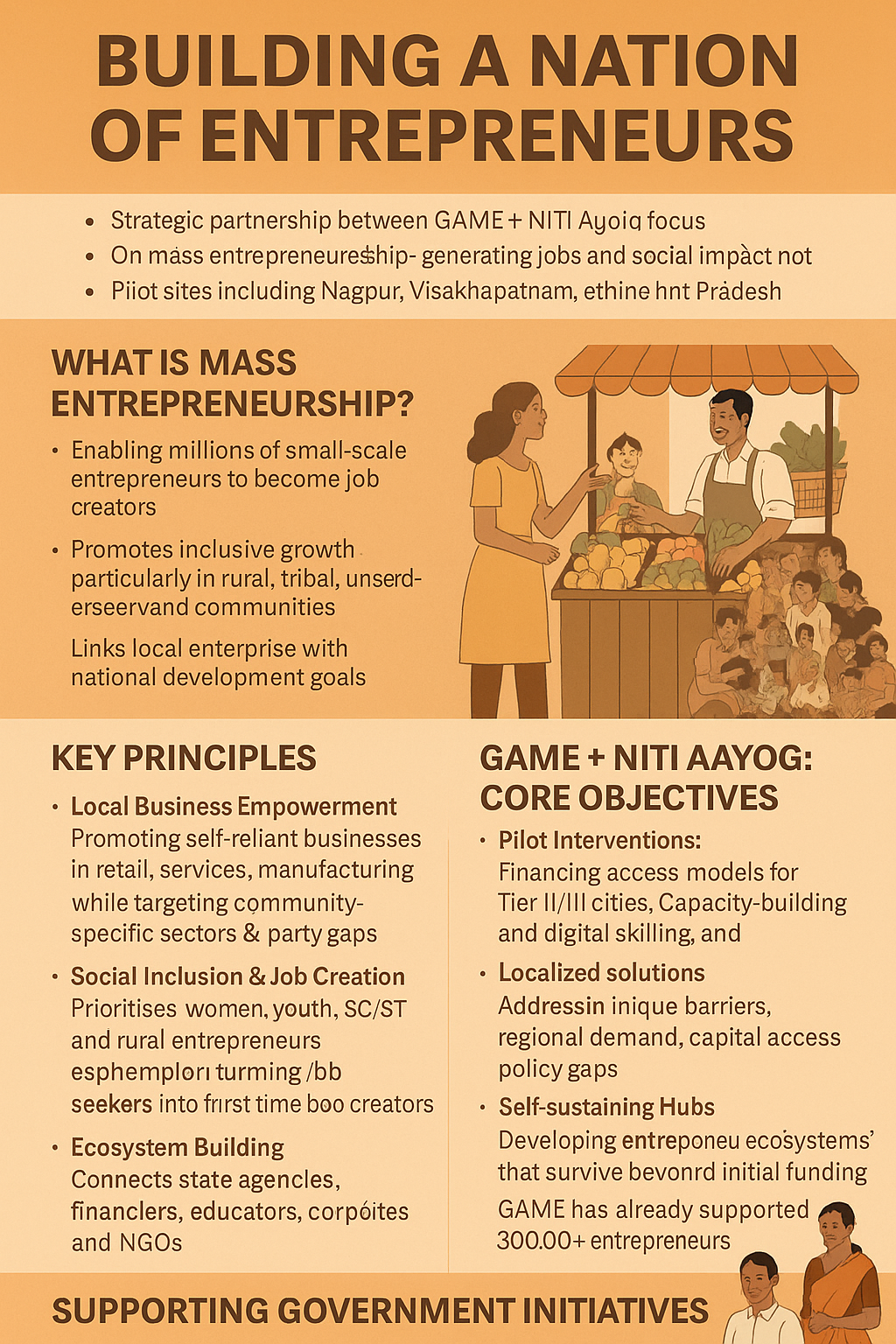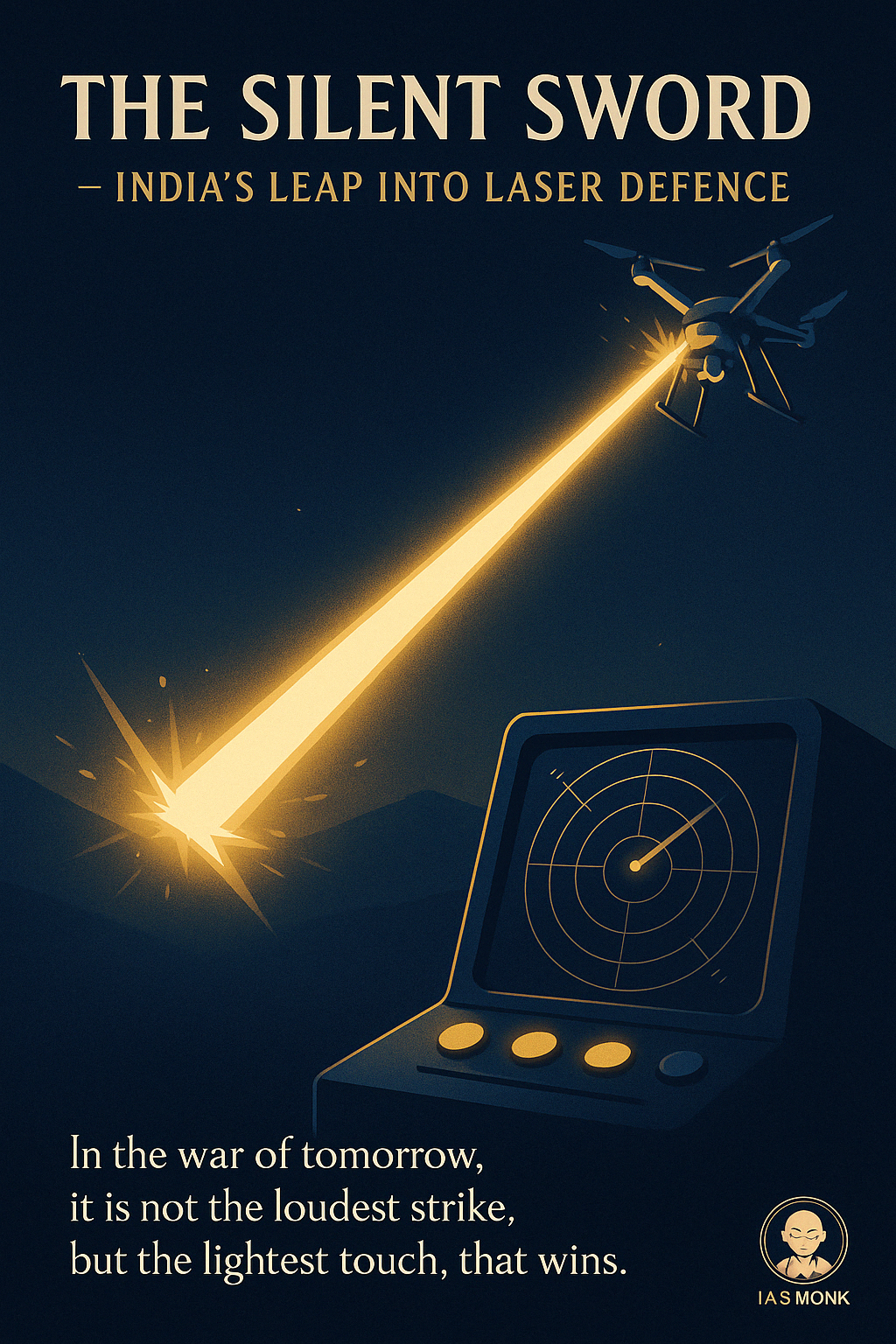
📅 May 3, 2025, Post 10: The Wizard’s Legacy and Today’s Champions |Mains Essay Attached | Target IAS-26 MCQs Attached: A complete Package, Dear Aspirants!
🏆 The Wizard’s Legacy and Today’s Champions

NATIONAL HERO — PETAL 010
May 3, 2025 | Thematic Focus: Sports & Legacy
Opening Whisper
“Honour is not just awarded—it is remembered through every stroke of excellence across generations.”
Key Highlights
• Olympians Satwiksairaj Rankireddy and Chirag Shetty were conferred the Major Dhyan Chand Khel Ratna Award, India’s highest sporting honour.
• The award, named after Hockey Wizard Major Dhyan Chand, celebrates consistent excellence over four years of sporting performance.
• Winners receive a medallion, a certificate, and a cash prize.
• This year’s recognition underscores India’s rising badminton dominance on the global stage.
Legacy of Major Dhyan Chand
• Major Dhyan Chand (1905–1979) was an Indian field hockey legend known for his mesmerizing control over the ball.
• He led India to three consecutive Olympic gold medals in 1928 (Amsterdam), 1932 (Los Angeles), and 1936 (Berlin).
• In the 1936 Berlin Olympics, Dhyan Chand scored 6 goals in the final, mesmerizing even Adolf Hitler, who reportedly offered him a position in the German army (which he refused).
• Nicknamed “The Magician” and “Hockey Wizard”, his birthday (29 August) is celebrated as National Sports Day in India.
About the Khel Ratna Award
• Established: 1991–92 as the Rajiv Gandhi Khel Ratna Award.
• Renamed in 2021 to Major Dhyan Chand Khel Ratna Award to honour the hockey legend’s contribution.
• Purpose: Recognizes exceptional international sporting performance over four years.
• Awarded by: Ministry of Youth Affairs and Sports, Government of India.
Notable Past Recipients
| Year | Awardees | Sport |
|---|---|---|
| 1991–92 | Viswanathan Anand | Chess |
| 2009 | MC Mary Kom | Boxing |
| 2012 | Saina Nehwal | Badminton |
| 2016 | PV Sindhu | Badminton |
| 2018 | Virat Kohli, Mirabai Chanu | Cricket, Weightlifting |
| 2020 | Rohit Sharma | Cricket |
| 2021 | Neeraj Chopra | Athletics |
| 2023 | Rani Rampal | Hockey |
| 2024 | Lakshya Sen | Badminton |
| 2025 | Satwiksairaj Rankireddy & Chirag Shetty | Badminton |
GS Paper Mapping
GS Paper 1 → Indian culture & sports legacy
GS Paper 2 → Government schemes and awards
GS Paper 4 → Ethics: Role of sports in character building
A Thought Spark — by IAS Monk
“To honour a player is to honour a nation’s spirit. Between the wizardry of Dhyan Chand and the grit of today’s champions, India weaves its story of dreams in motion.”
High Quality Mains Essay For Practice :
Word Limit 1000-1200
India’s Sporting Odyssey: From the Glory of Hockey to the Rise of a Multisport Nation
India’s journey in the world of sports since Independence is a tale of transitions, tenacity, and a gradual emergence into a multisport identity. From the golden era of hockey that evoked national pride to the global dominance of cricket and the steady rise of athletes across disciplines, India’s sporting landscape reflects the evolution of a young republic seeking both identity and excellence.
The Golden Age of Indian Hockey
In the immediate years following Independence, Indian hockey stood as the undoubted jewel of the nation’s sporting crown. Led by stalwarts like Major Dhyan Chand, India had already claimed three Olympic gold medals before 1947 and added three more in 1948, 1952, and 1956, establishing an unparalleled dominance. Dhyan Chand’s artistry with the stick earned him global reverence and the moniker “The Wizard of Hockey.”
However, the decline began as other nations adapted more quickly to technological and infrastructural changes. The introduction of synthetic turf exposed the inadequacies of Indian training. Administrative mismanagement, lack of grassroots development, and neglect of sports science further accelerated the decline. It was only in 2020, after a gap of 41 years, that India clinched an Olympic hockey medal, signaling hope for revival.
Cricket: The Unifying Religion
While hockey’s dominance receded, cricket emerged as a cultural phenomenon. The 1983 World Cup victory under Kapil Dev was a watershed moment. It transformed the sport from a colonial legacy into a unifying national obsession. With the rise of legends like Sachin Tendulkar, Rahul Dravid, MS Dhoni, and Virat Kohli, cricket became a metaphor for aspiration, discipline, and global stature.
The inception of the Indian Premier League (IPL) in 2008 gave cricket a commercial thrust, blending entertainment with sport. The success of Indian cricket, particularly the 2011 World Cup win on home soil, has galvanized generations and set standards for infrastructure, player fitness, and fan engagement unmatched by any other sport in India.
Badminton: Quiet Ascent, Loud Victories
Parallel to cricket’s rise, badminton carved its niche with quiet determination. Saina Nehwal’s bronze medal at the 2012 London Olympics broke barriers for women in Indian sports. PV Sindhu elevated that narrative with a silver at Rio 2016 and a bronze at Tokyo 2020, becoming a global icon.
Doubles pairs like Satwiksairaj Rankireddy and Chirag Shetty have added depth to India’s badminton arsenal, winning prestigious titles and earning global rankings. The sport’s growth is backed by coaching centers like Pullela Gopichand’s academy, highlighting how structured training and mentorship can yield international success.
Wrestling, Boxing and Weightlifting: Battlegrounds of Grit
From rural akharas to Olympic podiums, Indian wrestlers have scripted tales of resilience. Sushil Kumar’s dual Olympic medals, Yogeshwar Dutt’s London bronze, and Bajrang Punia’s consistency have inspired a generation. Sakshi Malik’s 2016 medal, the first for an Indian woman wrestler, was a landmark moment.
Boxing has also flourished, led by the indefatigable Mary Kom, a six-time world champion and Olympic bronze medalist. Vijender Singh’s Olympic medal in 2008 paved the way for many like Lovlina Borgohain.
In weightlifting, Karnam Malleswari’s Sydney 2000 bronze was the first Olympic medal for an Indian woman. Mirabai Chanu’s silver at Tokyo and performances in World Championships have kept the spotlight on the discipline.
Track and Field Breakthroughs
Historically, athletics had remained India’s Achilles heel. But Neeraj Chopra’s javelin gold at Tokyo 2020 shattered this psychological barrier. It was not just India’s first Olympic medal in track and field, but also a message that with preparation and belief, global podiums are attainable.
Athletes like Hima Das, Dutee Chand, and Avinash Sable have made headlines, yet systemic challenges such as training infrastructure, coaching standards, and performance science continue to limit consistent progress.
Para-Athletes and Sporting Inclusion
India’s Paralympians have brought immense glory, with athletes like Devendra Jhajharia, Mariyappan Thangavelu, and Avani Lekhara proving that excellence knows no physical limitations. Their success stories emphasize the importance of inclusive sports policies and the untapped potential in para-sports.
Challenges and the Road Ahead
Despite recent gains, Indian sports face structural hurdles: lack of long-term vision, inconsistent funding, bureaucratic inertia, and inadequate rural outreach. There remains a heavy dependence on individual brilliance rather than systemic excellence.
However, initiatives like Khelo India, Target Olympic Podium Scheme (TOPS), and increased private-sector participation (through leagues, academies, and CSR) are beginning to address these gaps.
Conclusion
India’s sporting odyssey is a mirror to its larger socio-economic evolution. From an era of isolated brilliance to an ecosystem slowly embracing science, inclusivity, and ambition, the country stands on the brink of a sports renaissance. The task ahead is to ensure that talent, irrespective of background, gets the opportunity to flourish. From the hockey stick of Dhyan Chand to the javelin of Neeraj Chopra, the baton of sporting excellence is being carried forward. India’s story is no longer just about potential—it is about realization.
Target IAS-26: Daily MCQs :May 3, 2025
📌 Prelims Practice MCQs
Topic: Major Dhyan Chand Khel Ratna Award
MCQ 1 — Type 1: How many statements are correct?
Q. MCQ 1: Consider the following statements regarding the Major Dhyan Chand Khel Ratna Award:
1) It is given annually for lifetime contributions to Indian sports.
2) It was instituted in the year 1991–92.
3) The award includes a medallion, a certificate, and a cash prize.
4) It is named after a legendary Indian football player.
Which of the above statements is/are correct?
A) Only two
B) Only three
C) All four
D) Only one
🌀 Didn’t get it? Click here (▸) for the Correct Answer & Explanation
✅ Correct Answer: A) Only two
🧠 Explanation:
•1) ❌ Incorrect – The award is given for outstanding performance over four years, not for lifetime achievement.
• 2) ✅ Correct – It was instituted in 1991–92.
• 3) ✅ Correct – The award includes a medallion, certificate, and cash prize.
• 4) ❌ Incorrect – It is named after Major Dhyan Chand, a hockey legend, not a football player.
MCQ 2 — Type 4: Direct factual
Q. MCQ 2: With reference to Major Dhyan Chand, consider the following statements:
• 1) He played a key role in India winning three consecutive Olympic golds in hockey.
• 2) He is often referred to as ‘The Magician’ for his extraordinary control over the ball.
• 3) He was conferred the Bharat Ratna posthumously in 2021.
• 4) His birthday is celebrated as National Sports Day in India.
Which of the statements given above are correct?
A) 1 and 2 only
B) 1, 2 and 4 only
C) 2, 3 and 4 only
D) All four
🌀 Didn’t get it? Click here (▸) for the Correct Answer & Explanation
✅ Correct Answer: B) 1, 2 and 4 only
🧠 Explanation:
1) ✅ Correct – He was instrumental in India’s Olympic golds in 1928, 1932, and 1936.
• 2) ✅ Correct – He was indeed nicknamed ‘The Magician’.
• 3) ❌ Incorrect – As of now, he has not been conferred the Bharat Ratna.
• 4) ✅ Correct – His birthday, August 29, is celebrated as National Sports Day.
MCQ 3 — Type 3: Which of the above are correct?
Q. With reference to Multilateral Development Banks (MDBs), consider the following statements:
1.They are being urged to stretch their balance sheets to increase lending capacity.
2.They must increasingly mobilize private finance at affordable rates.
3. MDBs currently operate under the governance of the World Trade Organization.
Which of the above statements is/are correct?
A) 1 and 2 only
B) 2 and 3 only
C) 1 and 3 only
D) All three
🌀 Didn’t get it? Click here (▸) for the Correct Answer & Explanation
✅ Correct Answer: A) 1 and 2 only
🧠 Explanation:
Statements 1 and 2 correctly reflect the UN proposals for MDB reform.
Statement 3 is incorrect – MDBs are independent institutions; they do not operate under WTO governance.


















